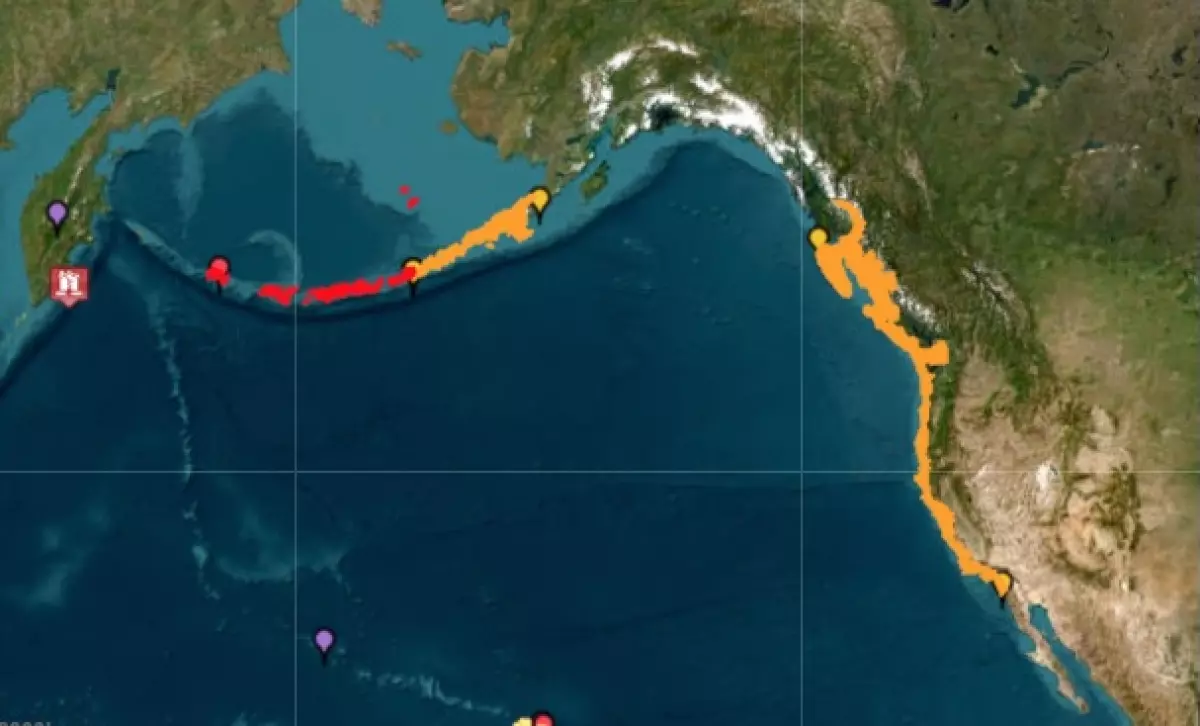Powerful Quake in Russia Triggers Tsunami Advisory for California as Waves Slam Japan and Siberia
California on Alert After Massive Pacific Quake
A powerful 8.8 magnitude earthquake that struck off the eastern coast of Russia has triggered tsunami advisories along the entire coast of California. The quake generated large waves that slammed into coastal buildings in Siberia and northeastern Japan, prompting urgent evacuation warnings in multiple Pacific regions.
The U.S. Tsunami Warning Center issued advisories for the entire U.S. West Coast, including California, Oregon, and Washington, as well as parts of British Columbia and Alaska. More severe tsunami warnings were declared for Hawaii, Guam, and Alaska’s Aleutian Islands, where coastal communities have been urged to evacuate immediately.
What the Tsunami Advisory Means for California
A tsunami advisory is the mid-level warning in the three-tier system—watch, advisory, and warning. It means that strong ocean currents and potentially dangerous waves are expected, and people are advised to stay away from beaches, harbors, and marinas.
If a tsunami does develop and reaches the California coast, it could first hit Mendocino County around 11:50 p.m., with waves expected to reach Los Angeles shortly after 1:00 a.m. The forecast suggests smaller waves for most regions, though stronger currents remain a risk across the entire shoreline.
Areas of Concern and Predicted Wave Heights
Some coastal areas are more vulnerable than others. The largest waves are forecasted in:
Crescent City (Del Norte County) – Up to 5.4 feet
Port San Luis (San Luis Obispo County) – Up to 3.8 feet
Los Angeles and Southern California Coast – Less than 1 foot
Despite the relatively modest heights in some areas, officials stress that even small tsunami waves can be destructive due to strong currents and rapid surges.
Tsunami Risk Zones in California
Tsunami hazard zones aren’t limited to oceanfront beaches. Inland bayside and riverside locations can also be affected, depending on elevation and distance from the coast. These areas could still experience swift and dangerous water movements.
Earthquake Origin and Impact Abroad
The earthquake struck off Russia’s Kamchatka Peninsula at 9:25 a.m. local time Wednesday (4:25 p.m. Tuesday Pacific Time). The strong tremors injured several people in the region. Within hours, tsunami waves between 10 to 13 feet hit the Kamchatka coastline, damaging structures including a kindergarten.
In Japan, officials ordered evacuations along the eastern coast, warning of waves as high as 10 feet. One of the first tsunami reports came from Nemuro Hanasaki port in Hokkaido, where a 1-foot wave was observed. Video footage showed warehouses and other buildings being pulled away by rushing water in northeastern Japan.
Timeline for Potential Tsunami Arrival in California
If tsunami waves generated by the quake continue across the Pacific, the estimated arrival times for different locations in California are as follows:
Fort Bragg (Mendocino County) – 11:50 p.m.
Crescent City – 11:55 p.m.
Monterey – 12:15 a.m.
San Francisco – 12:40 a.m.
Los Angeles Harbor – 1:05 a.m.
Newport Beach – 1:10 a.m.
Oceanside & La Jolla – 1:15 a.m.
Officials are reminding residents that the first tsunami wave may not be the largest. In past events, such as the 1964 Crescent City tsunami, later waves were far more destructive than the initial ones.
Why Small Waves Can Still Be Deadly
Tsunami waves don't have to be massive to be dangerous. Just six inches of rapidly moving water can knock an adult off their feet, and two feet of water can carry away most vehicles. In coastal harbors, even modest waves can cause significant damage to boats and infrastructure.
According to the National Tsunami Hazard Mitigation Program, strong currents from a tsunami can injure swimmers and beachgoers, damage piers and docks, and cause widespread coastal disruption.
Preparedness Across California
City leaders across California are coordinating emergency plans. In Los Angeles, the mayor is working with port and coastal officials to ensure overnight readiness. Residents are encouraged to sign up for emergency alerts through local platforms.
In San Francisco, authorities are assessing shoreline areas and will issue evacuation orders if needed. Officials urge the public to stay informed and avoid coastal areas until the advisory is lifted.
A Reminder from History
Tsunamis can last for several hours, and the danger may persist long after the first wave hits. In previous events, people have mistakenly returned to the shore too soon, only to be caught by subsequent, larger waves.
California's coastal communities are urged to take every precaution, remain vigilant overnight, and follow all official advisories closely as the situation continues to evolve.
